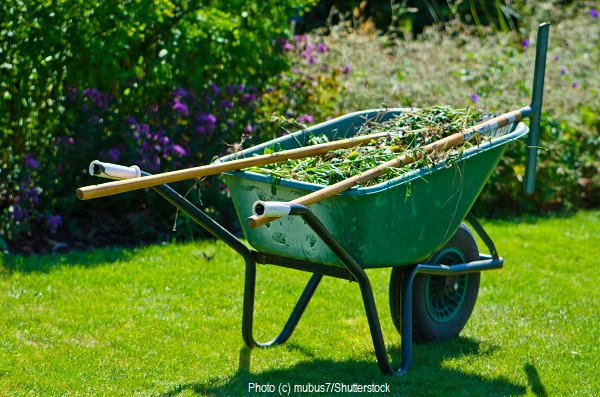|

Five Steps to Obtaining an “Almost” Maintenance-Free Landscape
By Benjamin Vogt
There is no such thing as a no-maintenance landscape…unless you literally just let it go and stay inside binge-watching the latest TV drama. Even if you have hundreds of acres, you’re probably going to need to manage it in some way, and the same goes for garden beds around your house. Let’s explore some strategies to help you make the best decisions as you plan your gardening goals.
1) Matching plants to the site
At the very top of creating a landscape that requires less work is carefully matching plants to your garden areas. This means going beyond the limited information plant tags provide. What soil will it do well in? How big does the plant get in your specific soil, light, and moisture levels? How does it spread and in what time frame? Is the plant native to my location? What size will it be in 5 to 10 years?
2) Matching plants to one another
When you’re doing research on matching plants to your site conditions, you’ll also want to learn how they play with others. Don’t place an aggressive species next to a behaved clumping plant, or a super tall plant next to a more modest specimen. Think about roots too: Placing a grass with a fibrous and shallow root zone along with a milkweed or coneflower with a deep taproot is smart design, as neither will be competing for the same soil resources. Then there are plants which add fertilizer to the soil in the form of nitrogen, so planting them near heavy feeders is a good idea. Such plants include Baptisia spp, Dalea spp, Lespedeza spp, and Cassia/Senna spp.
3) Plant spacing and layers
For most herbaceous perennials, annuals, grasses, and sedges, you can ignore plant spacing suggestions and place them 10 to 12 inches apart. The closer the better so they knit together, which will impede weeds. As the close-knit plants shade out weeds, they also shade the soil, which conserves moisture – this is what we call green mulch, or plants as living mulch. We can take it further and design our gardens in layers: Start with 50 to 60 percent of the plants being groundcover or shorter plants (about one foot tall), then have 30 to 40 percent of taller (two to four feet) plants, followed by even smaller groups of five- to eight-foot plants including small shrubs and trees. These layers reduce maintenance while also providing ample wildlife habitat.
4) Leave spring cuttings on the ground
Ideally, you wait until early to mid-spring to cut down your garden, as this not only helps plants overwinter, but provides shelter and hibernating spaces for birds and beneficial insects. When you do cut down the garden in spring leave all that detritus where it falls. These stems provide nutrients the plants need, and in a month or so new plant growth will cover up the seeming mess. Come winter, soil organisms will have decomposed the vast majority of these cuttings adding a new layer of fertile soil to your beds. Ah, Nature!
5) Let plants teach you
As gardeners, we design. We put specific plants in specific places because we want them there. Sometimes, if we’re lucky, the plants will thrive. But sometimes, they die, and often they will move. Don’t be dismayed if they move because the plant is teaching you what it really wants and needs – and you ought to pay attention. Success in gardening can often mean being a sort of plant whisperer who isn’t a helicopter parent. In other words, let the plants find their way in the world, then help them thrive in that world. Each year, the design will change and excite you in new ways. Choose species that self-sow to varying degrees or spread a bit by runners, and use species like black-eyed Susan (Rudbeckia hirta) that tend to be short-lived in the garden, giving way to more mature species as the years’ progress.
Benjamin Vogt is author of: A New Garden Ethic: Cultivating Defiant Compassion for an Uncertain Future. This article is courtesy the National Garden Bureau.
|

